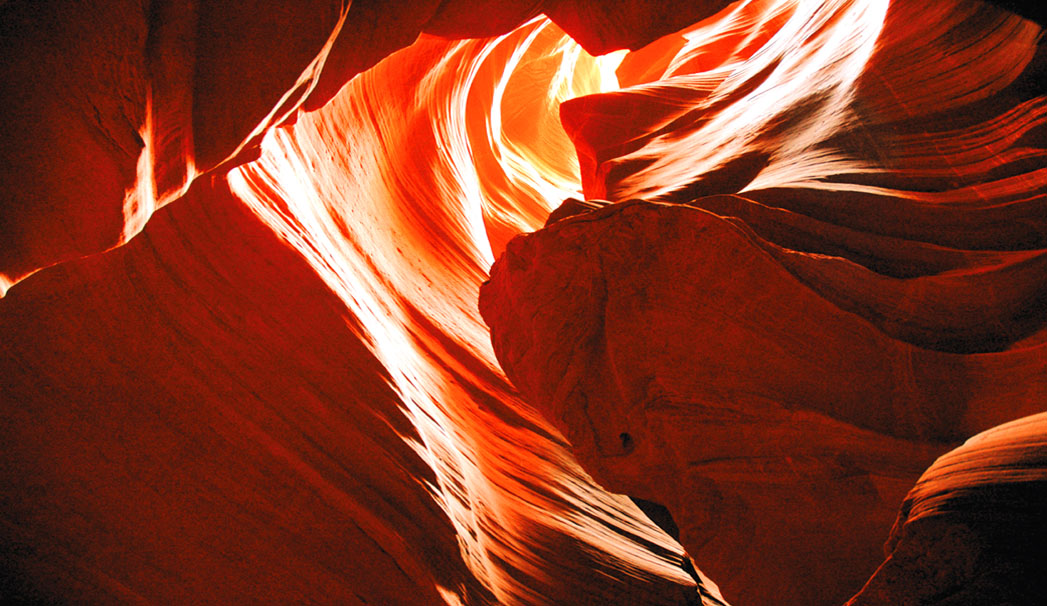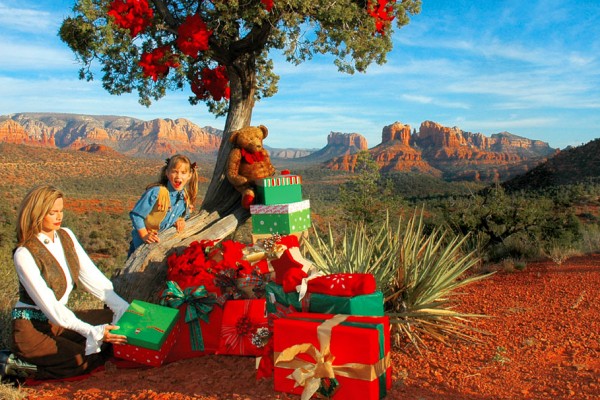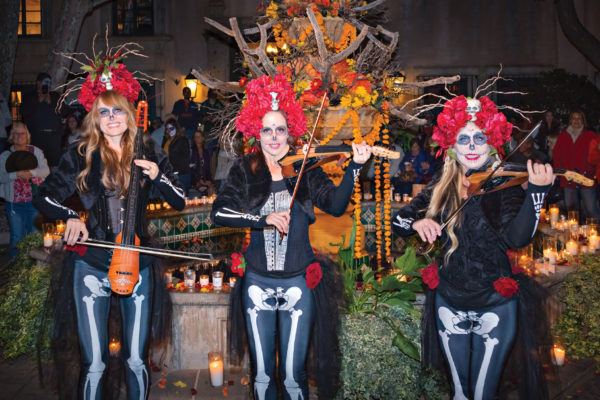Antelope Canyon is one of the most alluring spots in the Southwest, thanks largely to the talented nature photographers who’ve beautifully captured and shared its ethereal light beams, golden hues, and corkscrewing rock walls that seem to defy gravity. Yet Antelope isn’t Northern Arizona’s only slot canyon (though it is its most crowded). We recently drove three hours north of Sedona to explore Antelope and its two lesser-known cousins: Canyon X and Secret Canyon. We spent two adventurous, windy days with area guides, hiking (OK, squeezing) through often-narrow spaces. Each canyon tour is unique. Overland Canyon Tours provides solitude and lots of time for picture-taking in Canyon X; Navajo-owned Antelope Slot Canyon Tours gives visitors a spiritual and cultural view of Antelope Canyon; Slot Canyon Hummer Adventures adds off-road adventure to the tour of Secret Canyon. Which is most beautiful? You be the judge.
Antelope Slot Canyon Tours
Stepping into Antelope Canyon for the first time can be a spiritual experience…or remind you of standing in line waiting to ride Space Mountain at Disneyland. It all depends on the time of day and the season. With five outfitters from Page, Ariz., offering tours of the canyon (you can’t get into Antelope without a guide), hundreds of people can be in the slot at a time, making picture-taking all but impossible. Lucky for us, 50-mph winds have left the canyon empty this day, except for two visitors and Vere Chee, the Antelope Slot Canyon Tours guide, a rare treat that would have been much sweeter if sand wasn’t raining down on us from the dune that sits atop the canyon. Then again, as Vere reminds us during the short ride from Page through a wide sandy wash in a Chevy Suburban, “if not for windy days like this, we wouldn’t have the canyon.” (Antelope Slot Canyon Tours offers tours ranging from 90 minutes to 2- 1/2 hours for $20 to $35 per adult.) The wash ends abruptly at a narrow crack in the rust-colored sandstone cliffs, leading to the quarter-mile long Antelope Canyon, which the Navajo call Tse bighanilini (“the place where water flows through rocks”). Vere says it was named Antelope in the 1990s – antelopes roamed the area 80 years ago but no longer. While the height of the canyon walls changes with wind and floods, the highest point is generally 130 feet above the canyon floor; the walls are only three feet wide at the narrowest point.
Antelope Canyon has three main chambers, which form when the water from flash floods becomes trapped and swirls around in a whirlpool effect. The resulting sandstone walls have been sculpted smooth by Mother Nature, spiraling and corkscrewing through the canyon with a dizzying effect. Each twist and turn reveals new shapes and, just as spectacularly, new colors ranging from fiery red to glowing orange and from soft lavender to black.
What sets Antelope apart from the other slot canyons are the fantastic beams of sunlight that shoot down onto chamber floors April through September in the late morning and early afternoon. Naturally, this is also when the canyon is most crowded. We visited in the late afternoon and, though we missed the light show, the peace and quiet made up for it. Vere points out rock formations in the canyon such as the Bear. “It fell into the canyon and was so scared, it’s petrified,” jokes Vere, who delivers plenty of one-liners, and grabs our camera to photograph favorite spots. Vere says she recalls playing in the canyon when she was 13, lying on the floor and picking shapes out of the rocks just like other kids do with clouds. From time to time, Vere stops to play a cedar Native American flute while telling tales of the Native American flute-playing deity Kokopelli. It was spine-tingling when Vere crouched into an alcove and played, the whispery notes echoing all around us.




